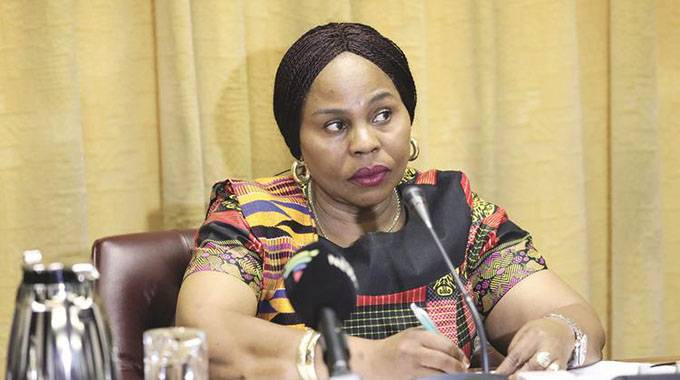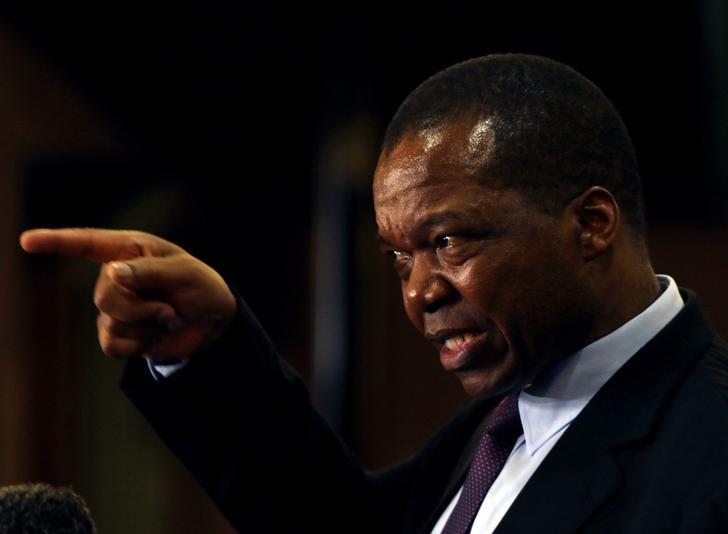RBZ unlikely to hike rates, demands market discipline
THE Reserve Bank of Zimbabwe (RBZ) is unlikely to hike interest rates in the immediate term, Governor Dr John Mangudya has hinted, but put the caveat that a definitive position will be reached when the bank’s Monetary Policy Committee (MPC) meets next month.
However, the RBZ Governor demanded discipline, maturity, responsibility, and refraining from speculative conduct from economic agents to restore economic stability and sanity in the markets.
He also pointed out that the bank needed to wait and give measures recently announced by Finance and Economic Development Minister Professor Mthuli Ncube time to see what impact the policy interventions will have.
Chief among the measures was the refinement of the foreign currency auction market to a true Dutch Auction System, allowing businesses to retain 100 percent of forex from domestic sales, transfer of RBZ external obligations to the Treasury, and of scrapping duties and taxes on 10 basic commodity imports.
Amid similar economic turmoil mid-last year, the central bank hiked its bank policy rate to a record 200 percent, from 80 percent previously, to stomp out speculative borrowing, as the domestic currency got battered by hot money.
The bank policy rate has since been cut down to 140 percent.
The intervention by the central bank was part of a series of measures introduced by authorities, including a temporary freeze on new loans and stock market trading, suspension of Government payments, and intense scrutiny of public invoices.
The measures had an immediate positive impact, halting the volatility of the exchange rate and reversing resurgent inflation for most of the second half of last year.
However, Minister Ncube, speaking at a business conference during the Zimbabwe International Trade Fair in Bulawayo last month, threatened a fresh bank policy interest rate hike if the parallel market rate continued to go north, roiling markets.
The central bank policy rate determines the minimum interest rates charged by commercial banks.
Minister Ncube said speculators putting pressure on the domestic currency should stop “because if you do, I will increase interest rates to 200 percent and beyond because that is what we know in other nations” is done in such situations.
The Treasury chief last week, however, said there was need to increase interest rates for short-term borrowings, but keep them low for longer-term credit, both Zimbabwe and US dollars.
Dr Mangudya, though, said he did not see immediate compelling reasons or circumstances to warrant a sudden sharp increase in the bank policy rate, such as due to a marked increase in bank loans, while ad-hoc rate hikes would create a credit squeeze and drive non-performing loans (NPLS).
The prevailing exchange rate volatility, which has torched price increases and distortionary pricing in the economy, was not a result of excessive growth in money supply, the central bank chief said.
This means, the central bank Governor indicated, there were no strong reasons to hike the central bank’s policy rate to increase the cost of finance in the country.
“It’s premature to decide on that. We have to be guided by facts, we will decide on that when the Monetary Policy Committee (MPC) meets, the MPC will review the situation about interest rates,” he said.
The MPC, which meets once a quarter, last met on March 28, 2023 and is expected to reconvene later next month.
Dr Mangudya chairs the bank’s MPC, which is comprised of Dr Jesiman Chipika, the RBZ Deputy Governor, Dr Innocent Matshe, also RBZ Deputy Governor, Professor Albert Makochekanwa, Persistence Elison Gwanyanya, Professor Daniel Makina, Dr Charity Jinya and Mathilda Dzumbunu.
“We will study the situation on the ground, but at the moment loans have not gone up, so there is no reason to increase interest rates; doing that will increase NPLS; that will be a misalignment of policy.
“There are people who have already borrowed, which would create a credit squeeze, the problems in the market are not a result of money supply (growth), they are behavioural issues.
“70 percent of deposits in the banking sector are in foreign currency and 30 percent in local currency. People in Zimbabwe who have Zim dollars always go to the parallel market (to buy foreign currency).
“But we can’t dollarise, we cannot be competitive in a dollarised environment, we need to look at the national interests; this economy cannot sustain dollarisation, we have limited foreign currency; we leave from hand to mouth (in terms of forex).
“We cannot sustain dollarisation, the rate at which US dollars go out is faster than the rate at which US dollars come in. If we dollarise aggregate demand will fall and companies will scale down and jobs will be lost,” he said.
Zimbabwe went through a similar experience between 2013 and 2017, when after dollarising in 2009 due to hyperinflation, the economy experienced a crunch US dollar liquidity.
Dollarisation, Dr Mangudya said, would negatively impact growth, adding at the moment US dollar inflation was negative while the blended inflation rate was positive, which if maintained at moderate levels, created latitude for business and economic growth.
Dr Mangudya said authorities sympathised with what people in Zimbabwe have gone through, especially the
hyperinflationary periods that wiped out savings, but exhorted Zimbabweans to remain holed in the past, as the hangover was detrimental to efforts aimed at rebuilding the economy.
But economist Eddie Cross differed, arguing the prevailing exchange rate volatility was a result of “money printing” by the central bank, which Dr Mangudya earlier vehemently denied, for payment of the 25 percent surrender portion to exporters.
“The Reserve Bank is printing money. They are printing money to buy gold and to buy hard currency for a variety of reasons, including to service external obligations.
“The Reserve Bank converts about 25 percent of exports earnings (local currency paid to exporters); they are earning about US$500 million a month now and 25 percent of that (surrendered) is US$125 million a month,” he said.
Cross also opined the source of the liquidity wreaking havoc on the market came from the surrender portion for gold exports, from whom the central bank is estimated to be buying at least US$100 million worth of gold monthly.
Secretary for Finance and Economic Development George Guvamatanga said the Treasury had not printed a single cent from the central bank since coming into office in 2017 and had also not used the central bank overdraft window.
He however did not rule out the potential negative effect of the high velocity of the large payments to public contractors and suppliers to the Government on exchange rate volatility.









